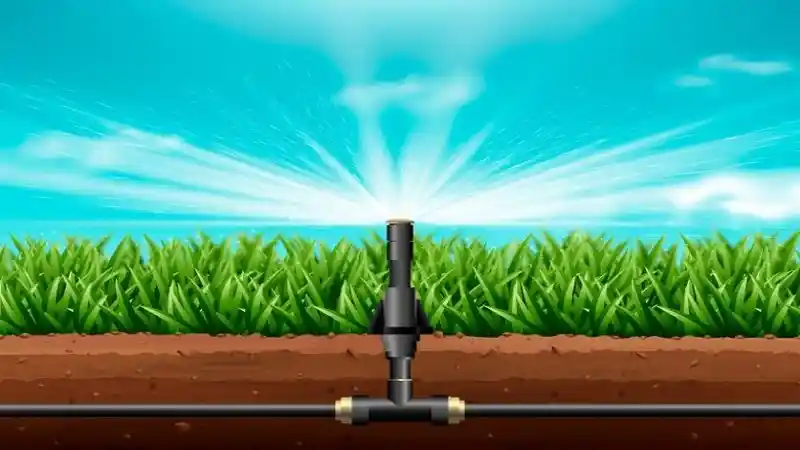In an era where sustainability is key, smart irrigation systems have emerged as essential tools for gardeners and sustainability enthusiasts alike. By automating watering using reservoir level monitoring, these systems not only conserve water but also ensure optimal plant growth.
This blog post will introduce you to the world of smart irrigation, providing insights into its benefits and practical tips for implementation. Whether you’re a safety inspector assessing environmental impacts, a sustainability advocate looking to reduce water waste, or a gardener eager to enhance your garden’s health, this guide is tailored for you.
Why Choose Smart Irrigation?
Smart irrigation offers a modern solution to age-old problems in gardening and landscaping. Unlike traditional methods, it uses technology to determine the precise amount of water needed at any given time. This prevents both overwatering and underwatering, which can harm plant health. The environmental benefits are significant, as it reduces water consumption—a crucial factor in areas facing drought or water restrictions.
Additionally, smart irrigation systems save time and labor. Gardeners no longer need to manually water their plants, allowing them to focus on other aspects of garden maintenance. For sustainability enthusiasts, this means contributing to environmental conservation without sacrificing convenience. Safety inspectors, too, can appreciate how these systems minimize human error in water management.
Understanding Reservoir Level Monitoring
At the heart of smart irrigation lies reservoir level monitoring. This technology involves using sensors to detect water levels in storage tanks or reservoirs, ensuring that water is neither wasted nor insufficient. These sensors, often referred to as level transmitters, provide real-time data that informs the irrigation system when to water the plants.
Reservoir level monitoring enhances the efficiency of water usage. By maintaining optimal water levels, it prevents unnecessary refilling and evaporation losses. This is particularly beneficial for large gardens or agricultural setups where water management can become complex. Sustainability enthusiasts will appreciate how this technology aligns with the principles of resource conservation.
Benefits for Safety Inspectors
Safety inspectors have a vested interest in ensuring that irrigation systems are both effective and compliant with environmental standards. Smart irrigation systems simplify this task by providing precise control over water usage. The data collected from reservoir monitoring can be used to assess the environmental impact of irrigation practices.
Furthermore, these systems can be integrated with other safety monitoring solutions, offering a comprehensive approach to managing natural resources. This integration allows inspectors to easily identify any potential issues, ensuring that water management practices remain sustainable and effective.
How Gardeners Benefit
For gardeners, the advantages of smart irrigation are manifold. By automating the watering process, they can ensure that their plants receive the right amount of moisture, leading to healthier growth. This is particularly useful for those with busy schedules who may not have the time to water their gardens manually.
Additionally, smart irrigation systems can be tailored to suit the specific needs of different plants. They can adjust watering schedules based on factors such as weather conditions, soil type, and plant species. This level of customization ensures that each plant receives the care it needs, enhancing overall garden health.
Sustainability Enthusiasts Rejoice
Sustainability enthusiasts will find much to celebrate in the adoption of smart irrigation technology. Water conservation is a critical aspect of environmental sustainability, and smart systems are designed to minimize waste. By using reservoir level monitoring, these systems ensure that water is used efficiently and responsibly.
Furthermore, the data generated by smart irrigation systems can be used to educate others about sustainable practices. Sharing insights and results with community members or through social media can inspire broader adoption of eco-friendly gardening techniques, amplifying the positive impact on the environment.
Implementing Smart Irrigation in Your Garden
Getting started with smart irrigation requires careful planning and consideration. Begin by assessing your garden’s specific needs, including the types of plants you have, the climate of your area, and your water supply. This information will help you choose the right system for your garden.
When selecting a smart irrigation system, look for one that offers reservoir-level monitoring capabilities. This feature will ensure that your garden receives the right amount of water at the right time. Additionally, consider systems that allow for customization, enabling you to tailor the watering schedule to your garden’s unique requirements.
Overcoming Common Challenges
While smart irrigation systems offer numerous benefits, they can also present challenges. One common issue is the initial cost of installation. However, this can often be offset by long-term savings in water consumption and maintenance. Some systems also require regular maintenance to ensure they continue to operate effectively.
To overcome these challenges, it’s important to conduct thorough research before purchasing a system. Look for reviews and case studies to understand how different systems perform in real-world settings. Additionally, consult with experts or community forums to gain insights and tips for successful implementation. For more details read this Sources Spacex
Conclusion
Smart irrigation systems with reservoir-level monitoring represent a significant advancement in sustainable gardening and water management. By automating the watering process and optimizing water use, these systems offer benefits for safety inspectors, sustainability enthusiasts, and gardeners alike.
They provide a practical solution to conserving water while maintaining healthy, thriving gardens. To explore more on how you can implement these systems and make the most of their capabilities, consider reaching out to professionals or joining online gardening communities to share and learn best practices.



